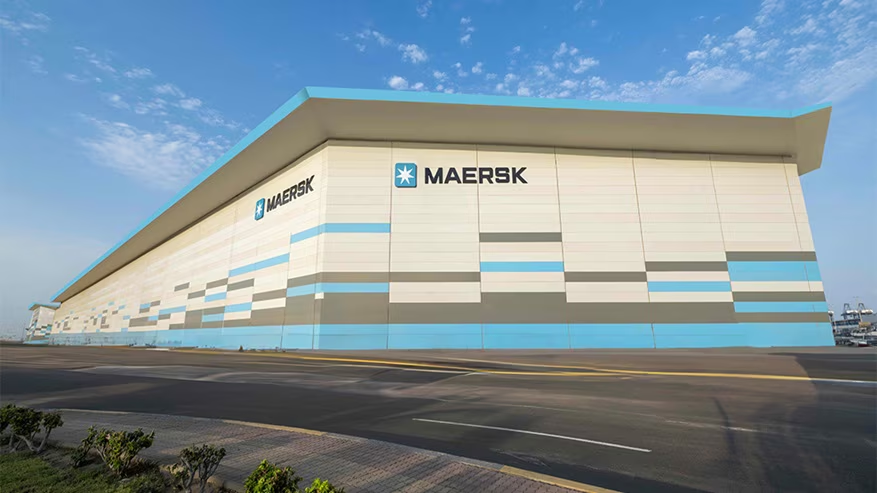Maersk lifts 2025 outlook after strong Q2 and Gemini rollout
The Danish shipping company Maersk saw Q2 revenue rise 2.8% to USD 13.13bn, led by growth in Terminals, Ocean and Logistics verticals.

Maersk has upgraded its full-year 2025 financial guidance following a stable second quarter that reflected solid performance across its key business segments. The Danish shipping and logistics group, founded in 1904, posted a 2.8% year-on-year revenue increase to USD 13.13 billion and reported earnings before interest and tax (EBIT) of USD 845 million for the quarter.
Despite continued pressure on freight rates and macroeconomic volatility, Maersk’s Q2 results remained broadly in line with the previous year. The company attributed this performance to operational efficiencies, ongoing cost discipline, and a successful rollout of the Gemini Cooperation.
“We have had a strong first half of the year, driven by consistent follow-through on our operational improvement plans and the successful launch of the Gemini Cooperation. Our new East-West network is raising the bar on reliability and setting new industry standards. It has been a key driver of increased volumes and solid delivery of our Ocean business,” said Vincent Clerc, CEO of Maersk.
“Even with market volatility and historical uncertainty in global trade, demand remained resilient, and we’ve continued to respond with speed and flexibility. As our customers navigate these complex challenges, we remain committed to helping them build stronger and more adaptable supply chains—making sure they are ready to not just weather disruption, but to grow through it,” stated Clerc in an official release.
Segment performance
The Ocean segment contributed USD 8.57 billion in revenue, up from USD 8.37 billion in Q2 2024. Volume increased by 4.2% year-on-year, largely driven by export growth from Asia. While freight rates saw partial recovery during the quarter, they remained below both sequential and prior-year levels. EBIT for Ocean declined to USD 229 million, compared with USD 470 million in the same period last year. The full implementation of the Gemini Cooperation in June helped improve schedule reliability, which exceeded 90% in its initial months.
Maersk’s Logistics & Services segment continued to improve operationally. EBIT rose 39% year-on-year to USD 175 million, up from USD 126 million in Q2 2024. The EBIT margin strengthened to 4.8% from 3.5%, while revenue saw a modest increase to USD 3.67 billion, compared with USD 3.63 billion last year. The gains were driven by productivity improvements and tight cost controls.
Terminals delivered another record-breaking quarter in terms of throughput and revenue. Volumes increased by 9.9%, supported by additional Ocean cargo routed through terminals following the Gemini Cooperation rollout. EBIT for Terminals rose to USD 461 million, a 31% increase from USD 353 million in the same period last year. Return on invested capital (ROIC) for Terminals reached 15.4%, compared with 12.2% a year earlier.
Full-year 2025 guidance upgraded
Citing stronger-than-expected global demand—particularly outside North America—Maersk revised its outlook for global container market volume growth to a range of 2% to 4%, up from its previous -1% to 4% forecast.
The company now expects full-year underlying EBITDA to range between USD 8.0 billion and USD 9.5 billion, up from earlier guidance of USD 6.0 billion to USD 9.0 billion. The EBIT forecast has also been raised to a range of USD 2.0 billion to USD 3.5 billion, from the previous USD 0.0 billion to USD 3.0 billion. Free cash flow is now expected to be approximately USD -1.0 billion or higher. Capital expenditure (CAPEX) guidance remains unchanged at USD 10.0–11.0 billion for the periods 2024–2025 and 2025–2026.
While the revised guidance reflects improved market conditions, the company highlighted ongoing geopolitical and macroeconomic risks, especially related to disruptions in the Red Sea, which it expects will continue through the rest of the year.
Maersk outlined several sensitivities impacting its performance. A change of USD 100 in freight rate per forty-foot equivalent unit (FFE) could impact EBIT by USD 700 million, while a 100,000 FFE change in volume may affect EBIT by USD 10 million. Similarly, a USD 100 per tonne change in bunker fuel prices or a 10% fluctuation in the US dollar exchange rate could impact EBIT by USD 100 million each.
Shareholder returns and CAPEX
During the second quarter, Maersk returned USD 864 million to shareholders, including USD 514 million through share buybacks. Capital expenditure for the quarter stood at USD 1.28 billion, up from USD 904 million in Q2 2024. The Ocean segment accounted for the largest share of this investment.
Strategic outlook
Maersk continues its strategic transformation into an integrated logistics provider offering end-to-end supply chain solutions. With a presence in over 130 countries and a workforce of around 100,000, the company is focused on delivering reliable, customer-centric logistics services across all modes of transport.
As part of its sustainability efforts, Maersk remains committed to reaching net-zero greenhouse gas emissions by 2040. The company defines low-emission fuels as those achieving a minimum 65% reduction in lifecycle emissions compared to traditional fossil fuels.
With the Gemini Cooperation showing early success and market demand holding steady in several key trade lanes, Maersk stated it remains cautiously optimistic for the remainder of 2025. The company reiterated its emphasis on operational resilience, customer support, and supply chain agility amid persistent external uncertainties.


